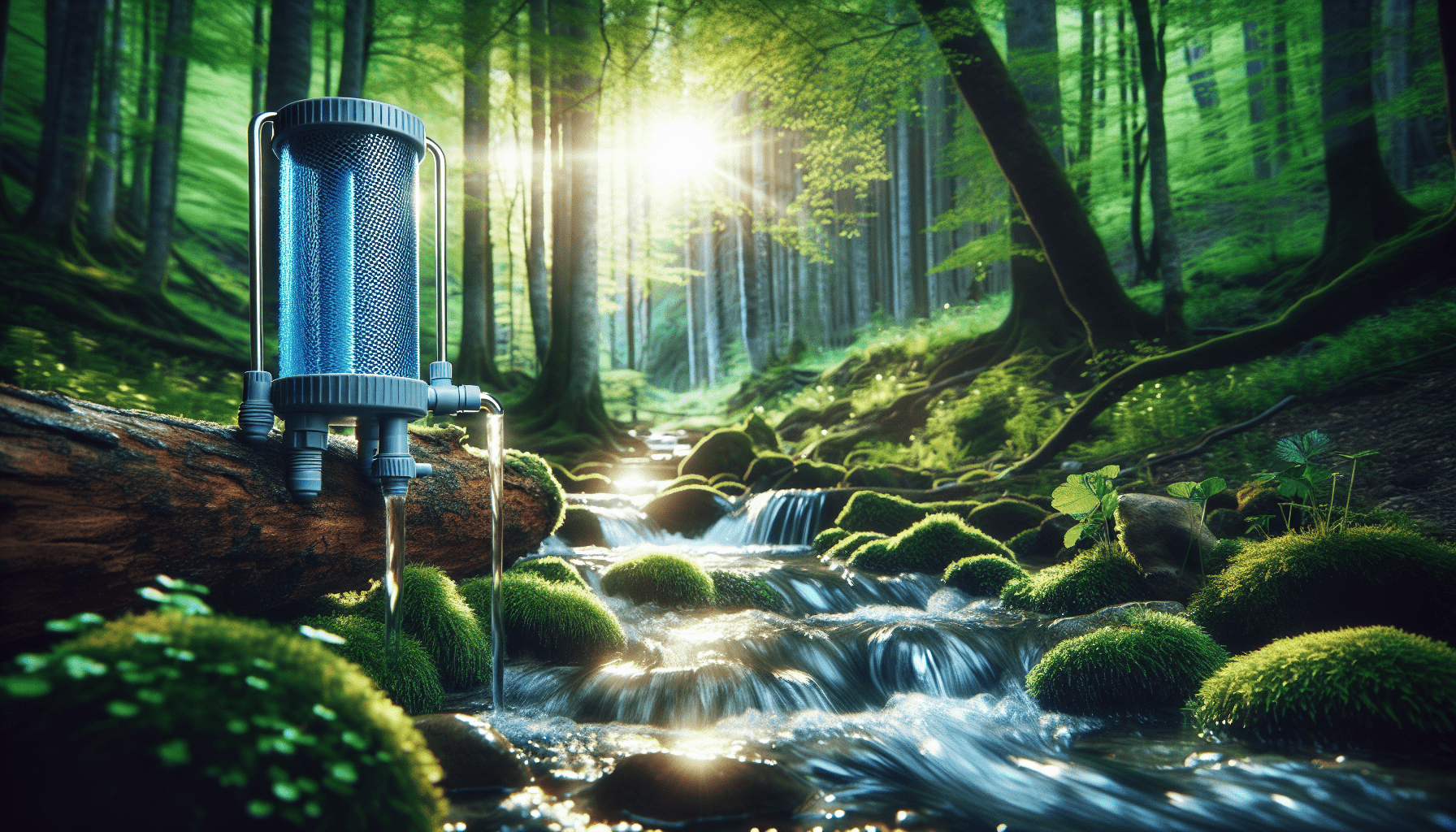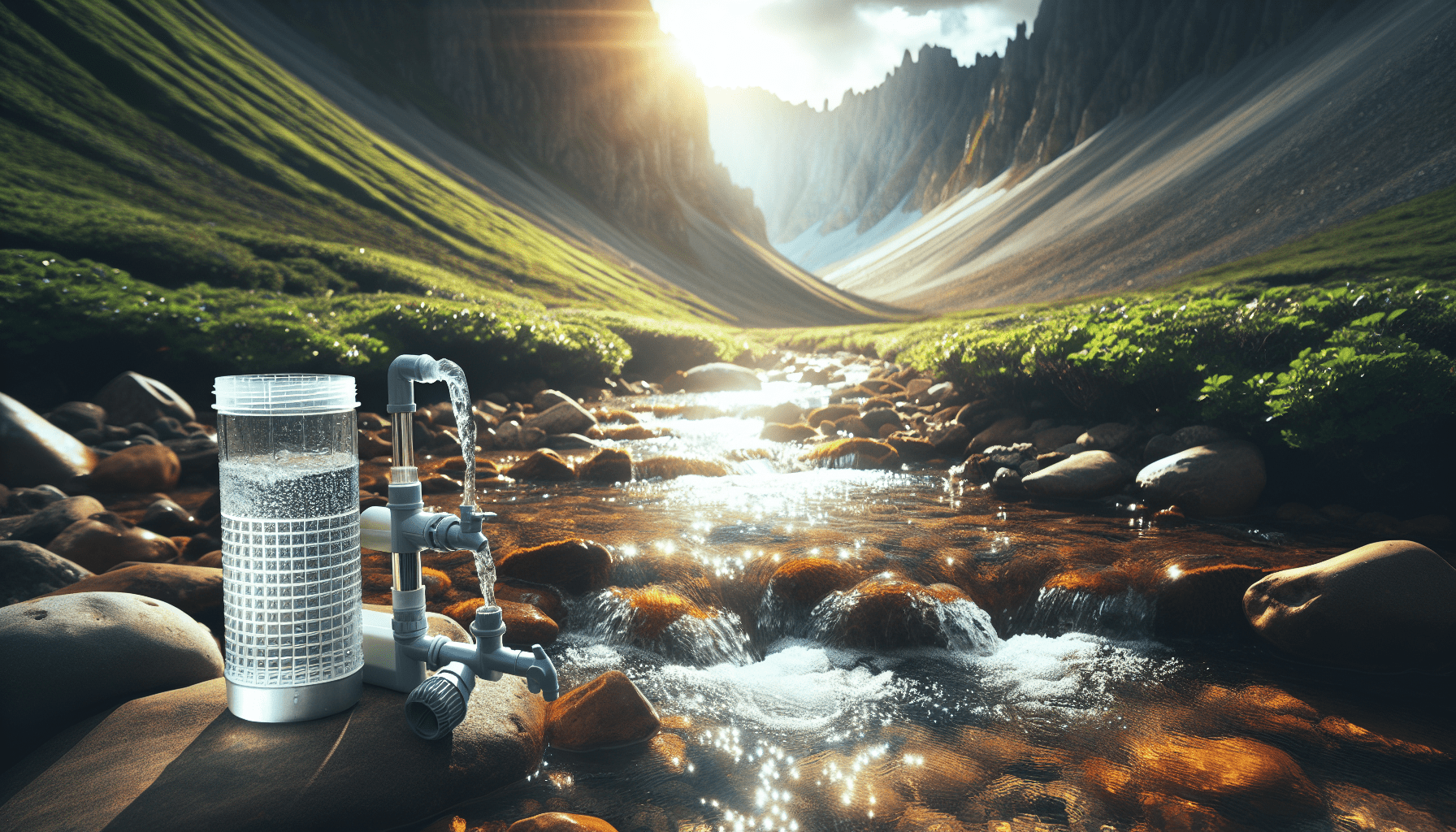Are you an adventurous soul who loves spending time in the great outdoors? If so, you know how crucial it is to stay properly hydrated during your excursions. However, finding and purifying water in remote areas can be a challenging task. Fear not, for we have gathered expert advice to help you navigate through this essential aspect of outdoor survival. From identifying natural water sources to employing effective purification methods, this article will equip you with the knowledge you need to quench your thirst safely in the wilderness. So, read on and get ready to embark on your next outdoor adventure with confidence and peace of mind.

Understanding the Importance of Water in the Outdoors
Water is a crucial element when it comes to enjoying outdoor activities. Whether you are hiking, camping, or simply spending time in nature, staying hydrated is essential for your well-being. Without an adequate supply of water, you put yourself at risk of dehydration, a condition that can have severe consequences on your health and overall experience. Therefore, it is important to understand the significance of water in the outdoors and take necessary precautions to ensure you have a clean and reliable source of water.
Dehydration and its Consequences
Dehydration occurs when your body loses more fluids than it takes in, and it can happen more quickly in the outdoor environment, especially during warm weather or high-intensity activities. The consequences of dehydration can range from mild discomfort to life-threatening situations. Symptoms of dehydration include dizziness, fatigue, muscle cramps, dry mouth, and even confusion or disorientation. In severe cases, dehydration can lead to heat exhaustion or heatstroke, which requires immediate medical attention. It is vital to recognize the signs of dehydration and take preventive measures to avoid such situations.

The Importance of Clean Water
While staying hydrated is crucial, it is equally important to ensure that the water you consume in the outdoors is clean and free from contaminants. Drinking contaminated water can lead to various waterborne illnesses, such as diarrhea, vomiting, and in extreme cases, even serious diseases like cholera or typhoid. Therefore, it is essential to prioritize the cleanliness of the water sources you encounter in the outdoors.
Sources of Water in the Outdoors
Finding water sources in the outdoors is a skill that every outdoor enthusiast should possess. Understanding where and how to locate water can greatly enhance your outdoor experience and ensure that you have a reliable supply throughout your journey.
Understanding the Landscape
One of the first steps in finding water sources is to study and understand the landscape you are in. Look for areas that are likely to have water, such as valleys, low-lying areas, or near vegetation. Knowing the topography of the area will give you a general idea of where water might be found.
Following Animals and Insects
Animals and insects are keenly aware of water sources in their natural habitats. By observing their behaviors and movements, you can often infer the presence of water nearby. Birds flying towards a specific direction or animals gathering in a certain area are good indicators that water might be nearby. Insects, such as bees or wasps, are also attracted to water sources, so keeping an eye out for their activity can help guide you.
Considering Vegetation
Vegetation, particularly lush greenery or concentrated growth, can indicate the presence of water. Plants require water to survive, so areas with dense vegetation are likely to have water sources nearby. Keep an eye out for areas with vibrant plant life, especially in arid or desert environments.
Listening for Water Sounds
In the outdoors, the sound of flowing water can be your best guide. The sound of a river, stream, or waterfall can often be heard from a distance if you listen carefully. By following the sound, you can locate a water source easily. Be attentive and train your ears to pick up on the subtle sounds of water in the wilderness.
Using Visual Clues
Visual clues are another valuable resource for finding water in the outdoors. Look for areas with damp soil, puddles, or signs of moisture. Animal tracks leading to a particular area or concentrated bird activity can also indicate the presence of water. Keep an eye out for these visual cues as you explore the surroundings.
Assessing Water Sources
Once you have located a potential water source, it is essential to assess its suitability for consumption. Not all water sources are safe to drink from, as they may be contaminated with harmful bacteria, parasites, or chemicals. Assessing water sources before using them will help ensure you have clean and safe water for hydration.
Checking for Contamination
Inspect the water source for any signs of contamination. Look for obvious pollutants like trash, sewage, or dead animals nearby. Avoid water sources that show signs of contamination, as they pose a significant risk to your health.
Avoiding Polluted Water
When it comes to water in the outdoors, it is better to be safe than sorry. Even if a water source appears clean, it may still contain harmful pathogens or pollutants. It is advisable to avoid drinking water directly from natural sources without proper purification, especially in unfamiliar areas.
Assessing the Flow and Clarity
The flow and clarity of the water can provide valuable insights into its quality. Fresh flowing water, such as a fast-moving stream or river, is generally considered safer than stagnant water. Additionally, clear water is usually an indication of lower turbidity, which means fewer sediments or contaminants.
Testing with Water Filter or Purifier
To ensure the water is safe for consumption, it is highly recommended to use a water filter or purifier to eliminate any potential contaminants. These tools are designed to remove bacteria, protozoa, and other harmful particles from the water, making it safe to drink. Carry a reliable water filter or purifier with you when venturing into the outdoors to ensure you have access to clean water.
Methods of Water Purification
When it comes to purifying water in the outdoors, there are several methods available, each with its advantages and limitations. Understanding these methods will allow you to choose the most suitable one based on your specific situation.
Boiling Water
Boiling water is one of the most effective methods of purification. By bringing the water to a rolling boil, you can kill most bacteria, viruses, and parasites present. This method is simple and doesn’t require any additional tools or chemicals. However, boiling water may not remove chemical toxins or debris.
Using Chemical Water Treatment
Chemical water treatments, such as iodine or chlorine tablets, are lightweight and convenient options for purification. These chemicals effectively kill harmful microorganisms present in the water. However, they may leave a residual taste or odor and require a waiting time for the treatment to take effect.
Using Water Filters
Water filters are mechanical devices that physically remove impurities from the water. They come in various types, including straw filters, pump filters, and gravity filters. Water filters can effectively remove bacteria, protozoa, and some viruses. However, they may not eliminate all types of contaminants and require regular maintenance and replacement of filter cartridges.
UV Water Purifiers
UV water purifiers use ultraviolet light to damage the DNA of microorganisms, rendering them incapable of reproduction. These devices are compact and lightweight, making them ideal for outdoor use. UV purifiers are highly effective against bacteria, viruses, and protozoa but may not remove chemical contaminants or sediments.
Solar Water Disinfection
Solar water disinfection, also known as the SODIS method, uses the sun’s ultraviolet radiation and heat to disinfect water. Plastic bottles filled with water are exposed to direct sunlight for several hours, which kills most pathogens. It is a simple and cost-effective method, but it may not eliminate all types of contaminants and is dependent on weather conditions.
Activated Charcoal Filters
Activated charcoal filters are designed to adsorb contaminants, impurities, and chemicals from the water. These filters have a high surface area that traps pollutants as the water passes through. Activated charcoal filters are effective in reducing chemical toxins, odors, and taste. However, they may not remove bacteria or viruses and require periodic replacement.
Purifying Water by Boiling
Boiling water is a reliable and straightforward method of purifying water in the outdoors. It is particularly useful when you don’t have access to water filters or chemicals for treatment.
The Boiling Process
To purify water by boiling, bring the water to a rolling boil, ensuring that it bubbles vigorously for at least one minute. If you are at higher altitudes above 6,561 feet (2,000 meters), increase the boiling time to three minutes. The intense heat of boiling water kills most pathogens, making it safe to drink.
Duration of Boiling
The duration of boiling depends on your location’s altitude, as lower air pressure at higher altitudes affects the boiling point of water. As a general guideline, boil water for at least one minute at sea level, three minutes at altitudes above 6,561 feet (2,000 meters), and longer if you are unsure.
Cooling and Storing Boiled Water
After boiling, allow the water to cool before consuming or storing it in clean and sanitized containers. It is important to use containers specifically designed for water storage to prevent any contamination. Properly labeled bottles or collapsible water reservoirs are recommended for storing boiled water.
Using Chemical Water Treatment
Chemical water treatment is a popular choice for outdoor enthusiasts due to its lightweight and portable nature. It is an effective method for killing harmful microorganisms.
Understanding Chemical Treatments
Chemical water treatments, such as iodine or chlorine tablets, work by releasing disinfecting agents that kill bacteria, viruses, and protozoa present in the water. These tablets are readily available in camping or outdoor stores and are compact and lightweight to carry.
Using Iodine or Chlorine Tablets
To use iodine or chlorine tablets, follow the instructions provided on the packaging carefully. Usually, you will need to drop the tablets into a specific volume of water and wait for a designated period. The waiting time allows the chemicals to dissolve and kill the microorganisms effectively.
Following Instructions and Waiting Time
It is crucial to follow the instructions provided and adhere to the recommended waiting time. Failure to do so may result in inadequate purification, leaving harmful pathogens in the water. Remember that the taste or odor of chemically treated water may be altered, and some individuals may find it unpleasant.
